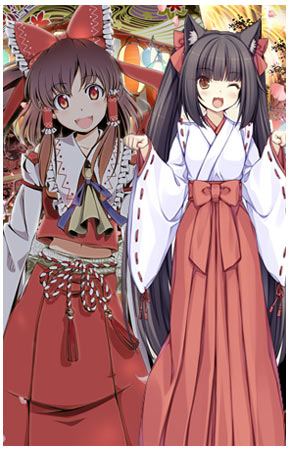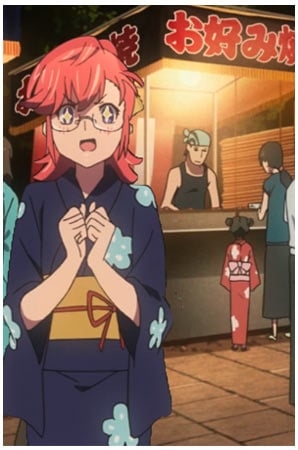The Japanese are fond of assigning titles to certain days, often based on phonetics, for example February 9 is Niku-no-hi (Meat Day) because 2/9 can be pronounced niku. March 5th happens to be Miko-no-Hi or Shrine Maiden Day, so I thought I’d write about these lovely females who are common fixtures in anime and games. Japan, of course, has two main religious traditions, the indigenous Shinto, which sees kami (gods or spirits) in natural objects like mountains, trees, rocks and rivers, and Buddhism, which was imported from the Korean Peninsula around the 6th century A.D. and has formed the basis for Japan’s culture ever since. Japanese are very laissez-faire when it comes to religion, and generally mix Shinto and Buddhism freely, sometimes without even knowing which is which unless smart-aleck foreigners come along and ask them questions. In Japan today there’s a tendency for people to turn to Shinto for life-affirming ceremonies like weddings, celebrating newborn babies and marking the start of a new year, and Buddhism only for funerals, and this makes Shinto inherently more “fun” and subsequently more likely to represented in popular culture…which is why you can probably identify the shrine maiden costumes below but have no idea what a Buddhist Nun might look like. While shrine maidens are ostensibly there to purify the home of the kami and give you advice about which Shinto good luck charm you should buy, they often aren’t all that pure. I once found myself drinking with some university students I taught English to and a miko-san who’d been sitting nearby came over to say hello. I was amazed at her ribald sense of humor — she definitely was no maiden. Incidentally, J-List has some interesting products for anyone interested in Shrine Maidens and Shinto culture.

March 5 is Miko Day, so hug a Shrine Maiden today.















